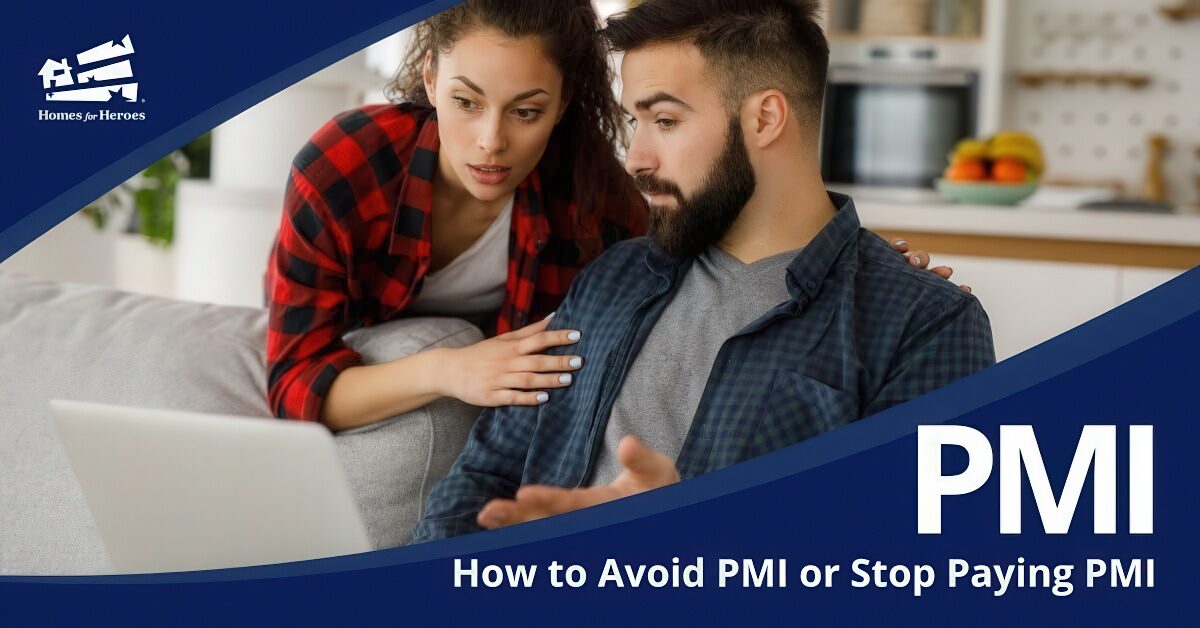
Private mortgage insurance (PMI) protects a lender from the risk associated with a borrower, if the borrower goes into default or foreclosure. Basically if you need to borrow money from a lender to purchase a home, but cannot afford to pay at least 20 percent down payment on the borrowed amount, the lender will likely require you buy PMI insurance from a PMI company before signing off on the loan. In this post, we look specifically at how to avoid PMI insurance and how to stop paying PMI insurance if you are now.
Reasons to Avoid PMI
There are several reasons to avoid PMI. Generally speaking, they all have to do with high cost and little to no value received for what you’re paying:
- Cost of PMI is typically between 0.5 – 1% of the borrowed amount each year. Meaning if you borrow $250,000 to buy your home, your PMI could be $1,250 – $2,500 per year, or $104 – $208 per month.
- Must pay PMI until total equity in home reaches 20 percent (some lenders may require more)
- May not be deductible
- Lender is sole beneficiary
How to Avoid PMI Insurance
These are the options when it comes to avoiding PMI payments:
- 20 Percent Down Payment – This is the most straightforward option, and the best option for those who can afford to do it. How to avoid PMI is to pay at least 20 percent down payment on a conventional mortgage loan.
- Piggyback Mortgage – Another option for qualified borrowers is the piggyback mortgage. This acts as a second home equity loan or line of credit and it is borrowed at the same time as the main traditional mortgage loan. The piggyback loan is typically a higher interest rate, and the rate is generally adjustable. For example, let’s say you can only pay 10 percent down payment. The piggyback loan or credit could be made out for another 10 percent and used as part of the down payment, totaling 20 percent down. This leaves the main mortgage amount at 80 percent, allowing you to avoid paying PMI insurance.
- VA Loan – Qualifying military service members who use a VA loan to purchase a home do not pay PMI.
How to Stop Paying PMI
If you’re already paying PMI, here are some options to explore on how to stop paying PMI:
- Your Home Value Appreciates – If the loan-to-value ratio of your home falls below 80 percent, some lenders will allow you to submit a written request to cancel your PMI. Typically, the lender will require the homeowner to pay for an appraisal of the home by a licensed professional, and the appraisal results need to be submitted along with the written request. Contact your loan officer to find out the specific requirements.
- Refinance to Cancel PMI – There is a cost to refinancing, but it may be more affordable than continuing to pay high PMI costs each month.
- Prepay Mortgage Principal – If you can pay your mortgage principal down so you have at least 20 percent ownership (equity) in your home, you may make a request to your lender to cancel your PMI policy and payments. Some lenders will accommodate this request.
- Last Way to Stop Paying PMI – PMI eventually ends in most cases. If you’ve stayed current in paying your mortgage, and your loan to value ratio (LTV) drops to 78 percent, where your down payment and the amount of the loan principal you paid off equals at least 22 percent of the original purchase price, the lender is required to cancel the private mortgage insurance policy and required payments. This is part of the federal Homeowners Protection Act.
Homes for Heroes can Help with a Mortgage and PMI
If you are a firefighter, EMS, or law enforcement first responder; active, reserve or veteran military member; doctor, nurse, technician, or specialist healthcare professional; teacher or educator; you qualify for the savings we provide.
When you work with our mortgage specialists to close on a new mortgage, you can save an average of $500 on lender fees. Simply sign up today to speak with our local mortgage specialist. They would be honored to assist you.
Estimate Your Savings
Learn how much you could save on your home purchase. Adjust the slider to see potential savings when you buy with a Homes for Heroes real estate and mortgage specialist. This is an estimate. Your actual savings may vary.